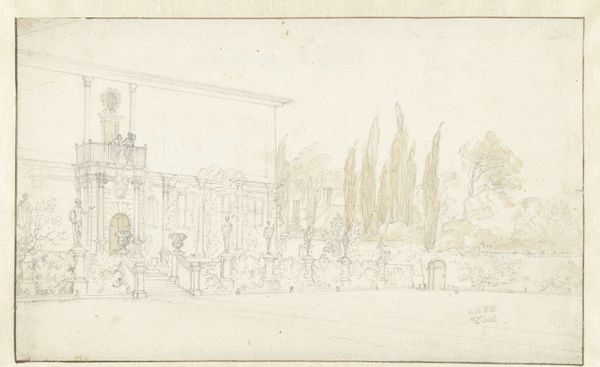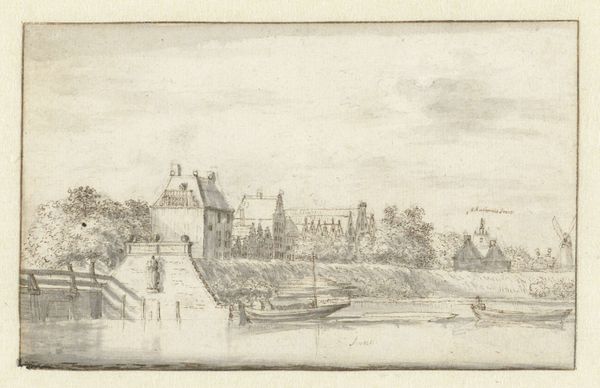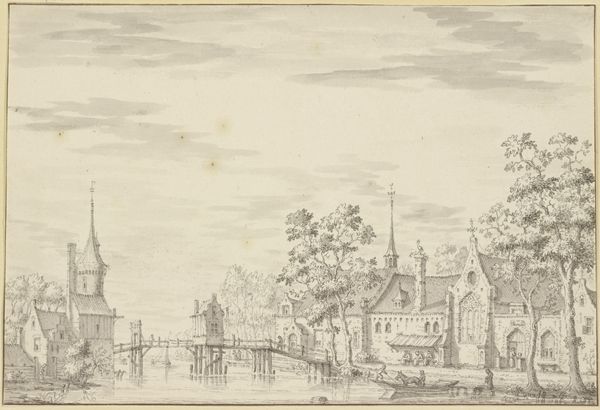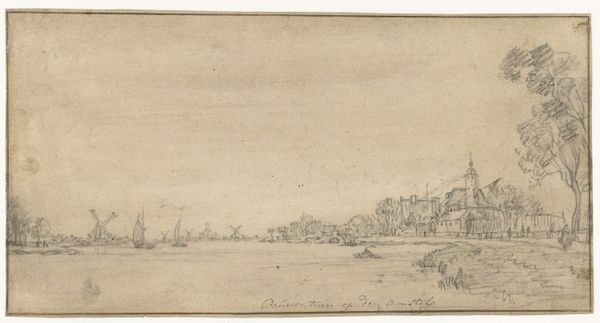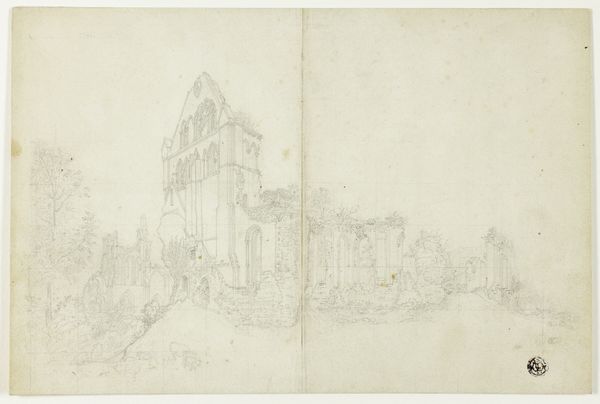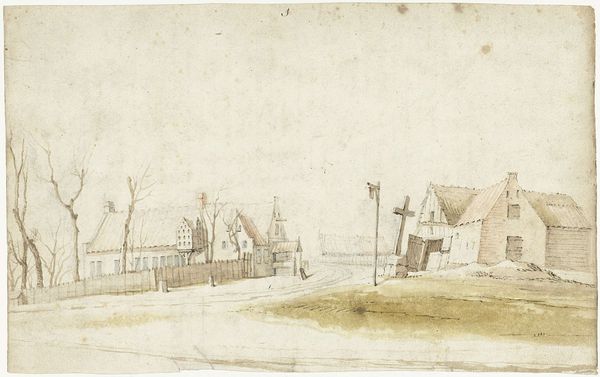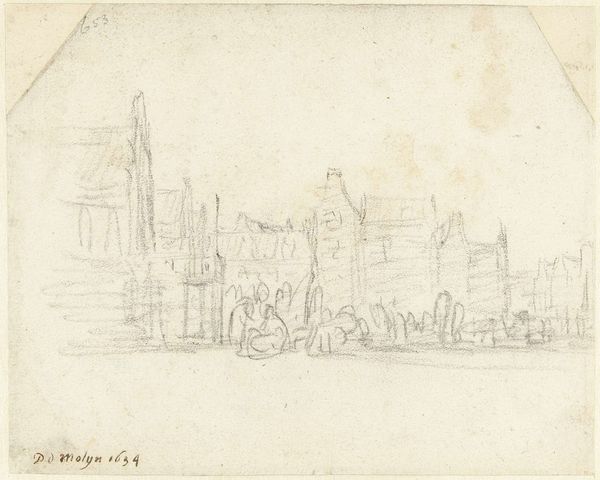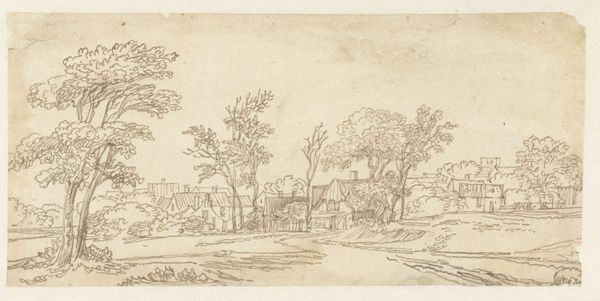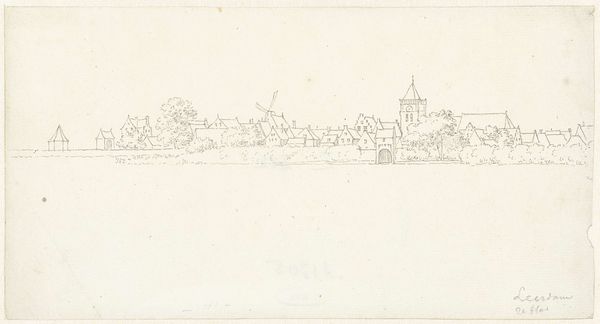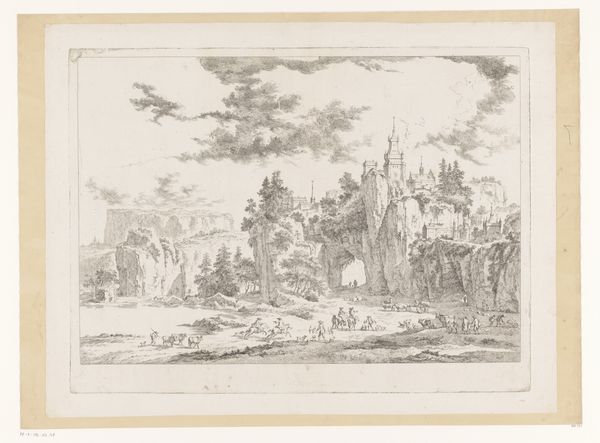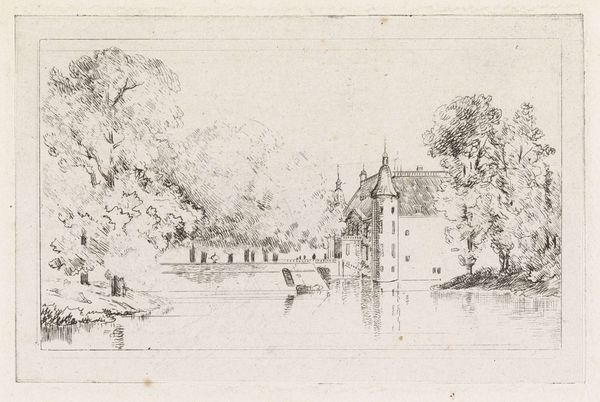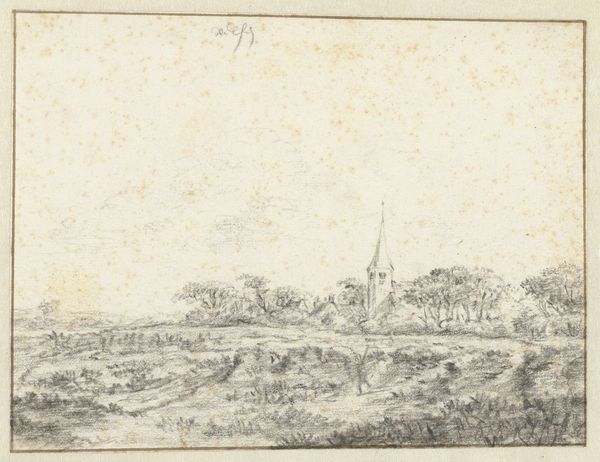
drawing, pencil
#
drawing
#
16_19th-century
#
landscape
#
pencil
#
cityscape
#
realism
Dimensions: height 165 mm, width 237 mm
Copyright: Rijks Museum: Open Domain
Editor: This is "Het Luxembourg te Parijs," a pencil drawing by Charles Rochussen, dating from 1824 to 1894. It has a hazy, dreamlike quality because of the pencil work. I'm curious about what you observe within its composition and use of line. How do you interpret this work from a formal perspective? Curator: The structural clarity lies in its careful balance. Observe how the architectural mass of the palace is offset by the delicate tracery of the garden's balustrade. Rochussen employs a sophisticated manipulation of perspective to guide the viewer's eye. The repetition of forms, the urns and rooftops, for example, create a visual rhythm that's quite pleasing. Editor: So, it's the interplay of these shapes, the rhythm, that generates its impact? What about the unfinished parts; do they add something to the visual experience? Curator: Precisely. And regarding the perceived 'unfinished' quality, I argue it enhances the drawing's immediacy, inviting contemplation on the nature of representation itself. We are reminded that it is a sketch, an exploration, rather than a fully resolved statement. Look at the light and shadow rendered through delicate hatching and cross-hatching – consider how these techniques articulate form and volume. Editor: I see that now, how the sketching suggests more than it states. Thanks for pointing that out. It's like we're getting a peek at the artist’s creative process through the composition. Curator: Precisely! The genius of art lies in its inherent formal qualities, as the piece’s form becomes its content.
Comments
No comments
Be the first to comment and join the conversation on the ultimate creative platform.
